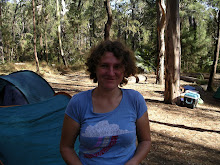 The Eagle Nebula (M16): Peering Into the Pillars of Creation (A nearby star-forming region about 7,000 light years from Earth.)
The Eagle Nebula (M16): Peering Into the Pillars of Creation (A nearby star-forming region about 7,000 light years from Earth.)How amazing is this photograph taken from flickr. There are many words to explain this phenomenon without the picture, but not many to describe the wonder with. How does photography and illustrations fit within the teaching frameworks I have introduced throughout this blog?
I have found myself searching long and hard for pictures for lesson planning. Creating active learning experiences like think-pair-share with comparing and classifying pictures and producing interactive PowerPoint presentation with mainly pictures. Keeping in mind the licensing as some photos have copyrights and cannot be used. It is frustrating not to be able to scan in and use pictures from books, but again, copyright stands in the way.
This strategy of inquiry based learning (excellent for special needs learning too), using the students prior knowledge to examine evidence and formulate answers can also be called problem solving. Problem solving is an excellent way to utilise the deeper thinking skills like analysis, synopsis and evaluation, and can be done in exciting authentic ways. Providing students pictures to sort into categories enables students to Extend and Refine knowledge and then making conclusions or answering a question with what you have discovered enables the students to use Knowledge Meaningfully (DoL 3 & 4, Marzano, R & Pickering, D 1997). Both working towards realistic Learning Outcomes.
Problem solving and reasoning reflects the Cognitive Learning Theory - as we learn the information is stored in schema in our brains. As we develop intelligence the information is either accommodated or assimilated into existing schema, hence building upon previous experience (Piaget). From this the theory of cognitive loading (Sweller 1988; 1994) tells us that in order for our long term memory to store the information, our working memory must process it first. Our working memories can only handle between seven and nine elements of information at a time. To help we can chunk information - put lots of information into fewer elements. For example, learning a phone number in number pairs instead of individual numbers. The same applies to labelling a diagram/picture. This chunks the information together allowing for the limited working memory to process it together (Cooper 1998). Pictures are invaluable.
Obviously for the visual learners, pictures are essential for learning, but I think essential for all types of learners. Pictures can be used to assist learning on many levels by telling a story, showing intense emotion and express social and cultural feelings. You can decorate the classroom with pictures to make classmates feel comfortable, allow the students express themselves and interests, the list is endless.
I will be using photographs and pictures throughout my lessons and will encourage my students to take their own.
Happy snapping,
Johanna
References
Marzano, R & Pickering, D. (1997). Dimensions of Learning: teacher's manual (2nd ed.). Alexandria : ASCD.

No comments:
Post a Comment